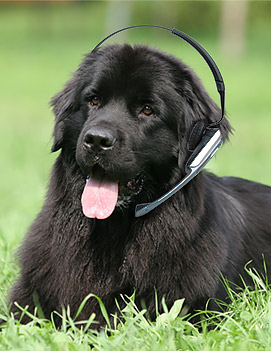McCarthy’s Party’s most popular day tour is the ‘Historic St. John’s and Cape Spear’ experience; providing a brilliant introduction, interpretation, and orientation of Newfoundland’s capital and its environs – including Cape Spear, the most Easterly Point in North America. This is the oldest colonized region in the new world and our local guides will regale you with its steeped history, legends & lore – all flavoured with their personal anecdotes and the good humour for which Newfoundlanders are so famous.
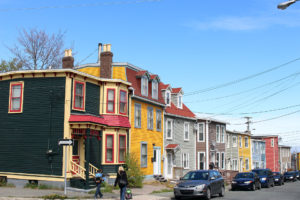 It is our hope that guests will leave this tour with a desire to explore more of the region with a greater appreciation for the delightful nuances that make the province and its people so unique. Many will want to spend more time at the Geo Center and The Rooms public galleries, others may return to the magnificent cathedrals and architectural structures, while some will make the especially early rise to see the first sunshine in North America from the wonderful vantages found at Cape Spear, Signal Hill or Quidi Vidi.
It is our hope that guests will leave this tour with a desire to explore more of the region with a greater appreciation for the delightful nuances that make the province and its people so unique. Many will want to spend more time at the Geo Center and The Rooms public galleries, others may return to the magnificent cathedrals and architectural structures, while some will make the especially early rise to see the first sunshine in North America from the wonderful vantages found at Cape Spear, Signal Hill or Quidi Vidi.
Shooting sunrise photos takes serious dedication and discipline, so if you’re willing to jump out of the bunk, we’re here to help you make the most of the opportunity. Welcome to “The far east of the western world!”
1. Check the forecast / Forget the Forecast. Newfoundland’s weather is best described as schizophrenic and is subject to dramatic mood swings that quickly render forecasts as useless. Just make your plan and go regardless, for there’s always something ridiculous to find at this hour. Keeping in mind that some important information can be gleaned from any forecast, including the time of the sunrise – which varies considerably at this latitude. It will also provide a decent prediction for wind speed and direction – thus determining the best locations for waves, foreground drama, and photographer comfort.
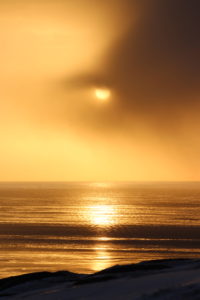
“Check the forecast & forget it…”
2. Daunting – The best photos are not caught exactly at dawn. Excellent sunrise images can be framed within the half hour before sunrise and a half hour following. This ensures a nice big window to work with, allowing even the slowest walkers ample opportunity to capture their personal memories, and more active shutter bugs to find multiple vantages.
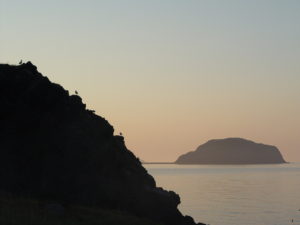
“…not always caught at sunrise.”
3. Dress for the season and function – there is no room for fashion on this runway. Good shoes/ boots, woolen hats and gloves, layers of wind proof and waterproof outerwear, sunglasses, suntan lotion, a bibbed hat, balaclava, a neck warmer, and water bottle are great to have on hand year round.
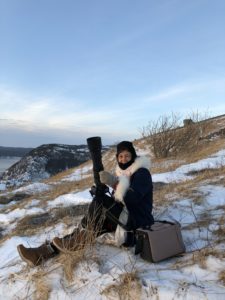
“… no room for fashion…”
4. No Selfies. When you’re shooting in this environment you must pay heed to every feature of your surroundings. Cliffsides are unforgiving when it comes to a misstep, loss of balance, or any distraction from the job at hand. Be mindful and use personal photos as an opportunity to engage the likeminded people you will certainly encounter. Asking someone to take your photo provides the perfect excuse to strike up conversation and share the beauty of the moment.
5. “The Ocean Ends Where the Land Begins.” Just as unpredictable as our weather, Newfoundland’s breakers vary in size and intensity, with freakishly large “Rogue Waves” pounding what might at first seem like a safe distance from the shoreline. Don’t walk beyond the grassy edges since this marks the highest point any water has reached in the past year. This is most critically observed at Cape Spear and Fort Amherst.
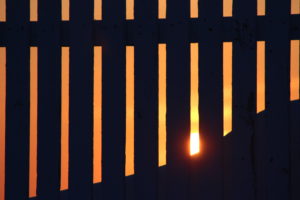 6. Foreground – Though here for the sunrise shots, the unique features of our skyline will make brilliant foregrounds, and especially interesting staging opportunities. As if “A” lighthouse wasn’t enough, we often joke that Cape Spear is named for the second (spare) lighthouse located higher up on the hill. There are many varieties of plant species to play into your shots. Brilliant geological features, and many fun construction projects that include everything from a “WW2
6. Foreground – Though here for the sunrise shots, the unique features of our skyline will make brilliant foregrounds, and especially interesting staging opportunities. As if “A” lighthouse wasn’t enough, we often joke that Cape Spear is named for the second (spare) lighthouse located higher up on the hill. There are many varieties of plant species to play into your shots. Brilliant geological features, and many fun construction projects that include everything from a “WW2
Gun Battery”, to the “only circle on the planet with four corners”. You’ll really enjoy shooting this place.
7. Engage your peers. There are many amateur and professional photographers in Newfoundland so you won’t be lonely at any hour. Thankfully they’re a really solid bunch of characters who are every bit as interested in your story as the shots they collect. If you say hello, listen to the dialect with a keen ear, and speak sensibly – they’ll be more than willing to offer all sorts of advice on the region and how to shoot it most effectively.
8. Equipment Check – No matter how smart you might be in the morning, take the time to ensure all your gear is in good working order, batteries are charged, memory card is no where near full, lens are clean, accessories are packed and accessible.
9. Cleats are essential for winter photography. Grippy soles are advisable for every other season. Newfoundland comes by its reputation as “The Rock” with all honesty, the last ice age scraped everything from the bedrock, leaving visual masterpieces and potentially treacherous walking conditions.
10. Wildlife viewings are frequent throughout every season. Sea birds, whales, porpoises, hawks, eagles, owls, fox, and otters make homes on this coastline throughout the year. A heightened level of awareness and preparedness increases the likelihood of capturing these candid occurrences. Keep your camera on the ready at all times.
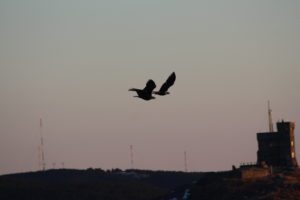
“… camera on the ready.”
11. Bladder Matters. There are limited toilet facilities at this hour and nothing available at Cape Spear or Signal Hill outside of peak tourist season. Use the toilet before you head out or be prepared to water the daisies.

